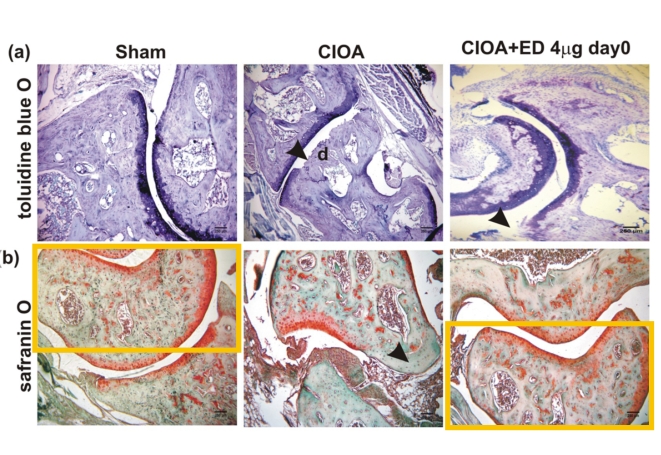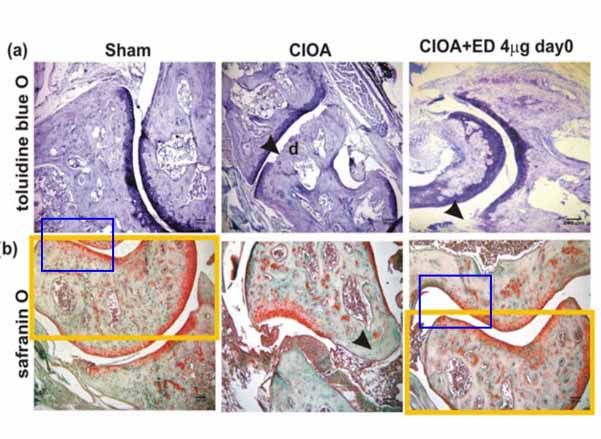The immunologist Nina Ivanovska, department head at the Stephan Angeloff Institute of Microbiology of the Bulgarian Academy of Sciences in Sofia, is an older generation of scientist, whose career began long before Photoshop was invented (or reached Eastern Europe). She studied in Sofia and did her PhD in microbiology at the Medical Academy of Science in Moscow, USSR. Behind the Iron Curtain this was at least as prestigious as graduating in Harvard or Cambridge.
Ivanovska’s speciality is arthritis research, a huge medical field. Her Angeloff Institute is associated with the Institut Pasteur in Paris and receives EU funding. Now several seemingly falsified figures in Ivanovska’s papers have been flagged on PubPeer, raw data is not available, the explanations and replacements provided by authors look unconvincing at best, and Ivanovska is torn between retracting the papers and defending them, while taking full responsibility. The institute’s leadership announced to investigate the affair and to “determine the administrative penalty for Prof. Ivanovska“.

Most of the evidence was posted by the pseudonymous Cheshire aka Actinopolyspora Biskrensis, who is not a scientist, but an expert for image duplication who already exposed many science fraudsters. One other commenter was Aneurus Inconstans, who has a science background. It is my first article about Bulgarian science, but not the first on Eastern Europe, here Poland and Czechia (disclaimer: I stem from Eastern Europe myself, Ukraine to be precise). In this regard, I’m happy to see the Angeloff leadership in Sofia taking the affair seriously, hopefully like their colleagues in Olomouc in Czech Republic.
An not not like their inept and/or dishonest colleagues in Poznan, Poland did.
It started promising, Ivanovska even announced a retraction, of a brand-new paper which was flagged on PubPeer right after it was published on 22 May 2021.
Lyudmila Belenska-Todorova, Ralitsa Zhivkova, Maya Markova, Nina Ivanovska Follicle stimulating hormone and estradiol alter immune response in osteoarthritic mice in an opposite manner International Journal of Immunopathology and Pharmacology (2021) doi: 10.1177/20587384211016198


Ivanovska replied:
“Dear Cinara Pruiniviridis, We have doubled 2 blocks in Figure 2 and Figure 6. We have corrected these figures however, the results are not changed.“
Then Cheshire joined with “You may also wish to review Figure 4(a).“

Suddenly, Ivanovska dropped the bomb, in two PubPeer comments:
“We would like to withdraw our manuscript.”
She was joined in that unusual announcement of a retraction by all 3 co-authors of that paper. It is not retracted yet. In other cases, Ivanovska took a confrontational approach and either denied there were any data manipulations, or at least insisted that these cannot be proven. Like here:
Petya Ganova, Ralitsa Zhivkova, Anton Kolarov, Nina Ivanovska Influence of estradiol treatment on bone marrow cell differentiation in collagenase-induced arthritis Inflammation research (2020) doi: 10.1007/s00011-020-01338-w
Ivanovska replied:
“These samples are not from consecutive sections (blue boxes) and are from different groups.“
And provided her own proof (right), not sure of what.
Strange, because the critic never said the images were identical, but that they were of the same tissue sample, purporting to show two differently treated mice.
But eventually, Ivanovska conceded, and replaced the image:
“Please find attached corrected Figure 3.”

The replacement “safranin O” picture is not convincing though. It is quite blurry because it has a different resolution than the rest of the figure. The image is also over-saturated in colour and appears shrunk horizontally. It looks like a botched attempt of a cover-up.
Ivanovska’s reaction in another case was even more pathetic.
Valeriya Gyurkovska, Tsvetanka Stefanova, Petya Dimitrova, Svetla Danova, Rositsa Tropcheva, Nina Ivanovska Tyrosine kinase inhibitor tyrphostin AG490 retards chronic joint inflammation in mice Inflammation (2014) doi:



Ivanovska, together with the first author declared on PubPeer:
“We cannot provide the original uncropped scan 8 years after the article has been published.”
It was 7 years, actually. The authors also added:
“Higher resolution images are not available and we do not keep lab notebooks.“
The latter part is indeed an interesting answer. Failure to keep records, especially lab books, is gross research misconduct in itself. Similar situation here:
Petya Dimitrova, Nina Ivanovska Tyrphostin AG-490 inhibited the acute phase of zymosan-induced inflammation International Immunopharmacology (2008) doi: 10.1016/j.intimp.2008.06.013


Ivanovska replied:
“Our comments on all 3 remarks.
- We can not find so far the original raw data in order to prove or disapprove your statement concerning blots (we are looking for them).
- We have the policy to keep histological slides 5 years after publishing in order to be sent to the experts in case of suspicions for data manipulations of photomicrographs. The original slides are no more available.“
Let’s accept for a moment Ivanovska’s argument that histological glass slides (which really don’t take much space) must be destroyed after 5 years. Whatever. But it would be difficult to find that same area on the slide under a microscope anyway. The actual raw data in this case are not the slides, but the original microscopy files, which are digital, and neither rot or take up that much space. Why were the digital microscopy images destroyed then?
Same applies for the western blot of Figure 8C. Why can’t Ivanovska find the scans, or at least the original PowerPoint file of the submitted figure where the images are embedded and can be often extracted uncropped from? No active scientist ever deletes the files of submitted manuscripts. Even if Ivanovska did delete those (for reasons unfathomable), she can write to the journal’s publisher and ask for a copy.
But then again, the other author of that paper, Petya Dimitrova, is a strange person with a strange attitude.
Petya Dimitrova, Nina Ivanovska, Lyudmila Belenska, Viktoriya Milanova, Wilhelm Schwaeble, Cordula Stover Abrogated RANKL expression in properdin-deficient mice is associated with better outcome from collagen-antibody-induced arthritis Arthritis research & therapy (2012) doi: 10.1186/ar3926

Cheshire: “Figure 5A and 5B appear to have one image which overlaps, at different magnification, but seem to be described differently.” Dimitrova:

A strange reply. Dimitrova, who is now associate professor at the same Angeloff Institute, accuses the PubPeer critic to have flagged image duplications way too late (instead of during peer review stage!), now her paper is too old (9 years), the cell dishes trashed long ago (even if nobody asked her to retake the photos), and then Dimitrova declares that “the original photos can be provided to the editor” only. Guess this applies to her other paper also:
Petya Dimitrova, Nina Ivanovska, Wilhelm Schwaeble, Valeriya Gyurkovska, Cordula Stover The role of properdin in murine zymosan-induced arthritis Molecular Immunology (2010) doi: 10.1016/j.molimm.2010.02.007

Ivanovska didn’t comment on these two collaborative papers from the lab of Cordula Stover, now senior lecturer at University of Leicester in UK. Also Stover remained silent, she didn’t reply to me either.
But others did. Penka Petrova, director of the Angeloff Institute, replied to me swiftly. Email from 31 May 2021, highlights mine:
“The problem you found in Prof. Ivanovska’s documents is very serious and I would like to assure you that our Institute of Microbiology of Bulgarian Academy of Sciences does not tolerate any speculation or manipulation of scientific data.
I would like to state that the Institute has not been informed about the actions of Prof. Ivanovska and her team on this issue and now, after your letter, we will take all legal steps to solve this problem. We have a strict policy against data manipulation, false results or plagiarism.
As you can see, we are a large Institute with many researchers working in different fields of science, and we rely on the ethics of our staff to maintain the good name of our institution. All articles published by our employees (guided or collaborated) are usually submitted to reputable journals, where they undergo a peer review process prior to publication. Obviously, some reviewers are likely to miss an important issue with the reports. That is why we are grateful to people like you who are fighting for better ethics in science, which is the prerogative of publishing high-quality and reliable scientific research.
I would like to thank you for informing me about these speculative manipulations found in Prof. Ivanovska’s works. I arranged a meeting with her and I requested a written explanation of the content of the figures in each of the articles mentioned in your letter.
The head of the immunology department has been informed about your message, and our Administrative Council will investigate this issue too.
The Scientific Council will determine the administrative penalty for Prof. Ivanovska in accordance with our institutional provisions and national legislation.“
Ivanovska wrote to me just 2 hours later:
“I really take the issue very seriously. I want to discuss the remarks with my co-authors. Never mind, I consider myself the major culprit.“
Problem is, I personally am not sure Ivanovska, who graduated in 1981, knows all these Photoshop tricks. But she sure is responsible when she defends those nevertheless.
Ivanovska didn’t reply to any of my follow-up emails, even while placing those bizarre comments on PubPeer. So now I can’t ask her why she (affiliation: “Institute of Microbiology, Afghanistan“) acts as editor for a predatory publisher, HSPI.
So, what do you think? Whodunit?


Get For Better Science delivered to your inbox.
Make a one-time donation
Make a monthly donation
Choose an amount
Or enter a custom amount
Your generous patronage of my journalism will be most appreciated!
Your generous patronage of my journalism will be most appreciated!
DonateDonate monthly



Pingback: Variant of concern – ocasapiens